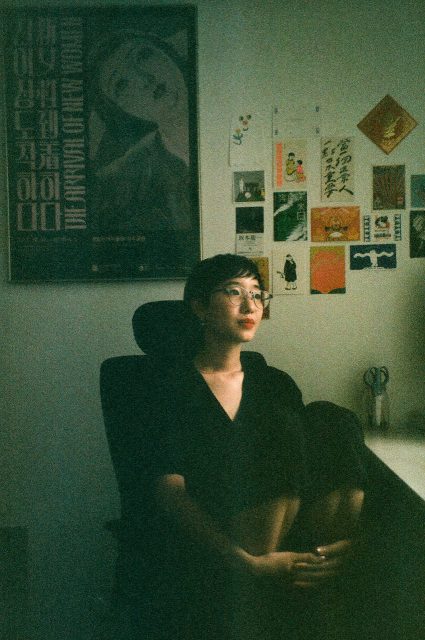When we are lost on what it means to be human, we often look towards art for a meditation on lived experiences. While Hong Kong is a myriad of perspectives, LGBTQ+ stories have historically seen less mainstream representation though by no means are they less pertinent. Before Art Month ends, we spotlight the artists who push the boundaries of art as a method of self-expression.
1. Ka-Man Tse
View this post on Instagram
Hong Kong-born photographer Ka Man Tse uses portraiture to observe the performance of identity under a two-fold lens. Liminal, unguarded moments come as they go in 2018’s narrow distances, Tse’s first solo exhibition in Hong Kong. Using a large view camera, Tse reveals her subjects set in hurried cityscapes while also recasting the world through a queer lens. “I photograph people I want to see,” Tse said to Dazed, reflecting the absence of queer representation in art and how her images seek to rectify this. In one, Tse composes a photo of a person sat semi-stunned and changing out of a dress into a plain shirt, interstitially caught between societal standards and his own fluid gender expression. Like much of the photographer’s other works, it is slow and deliberate. For even the broadest of audiences, Tse’s photos renders unseen moments until they are beautifully visible.
2. Kaitlin Chan
View this post on Instagram
Chan’s cartoons explore what queerness means in everyday encounter. Her work has been featured in established publications like The New Yorker, Popula and ArtAsiaPacific but Chan builds the bulk of her audience on Instagram, a platform she admits to be at times reductive of life’s complexities. Speaking with Vogue Hong Kong, Chan says “Humans can be messy, ambivalent, ambiguous and vague… we contain a lot of fluidity that isn’t very sexy.” Justifiably, it’s hard to condense the queer or Hong Kong experience into a carousel of ten comic panels but still it follows that social media is where people have found Chan’s work to be strikingly familiar, quietly comforting and most of all resonating. As the algorithm reels you into Chan’s work, it is easy to feel less alone knowing that queerness is a shared identity.
3. Jes Fan
View this post on Instagram
To understand how identity is constructed, artist Jes Fan picks the mode of craft. Jes’ work confronts the gendered politics of the body, often using malleable material such as glass, silicon and resin together with biological matter. Fan’s 2017 project, Testo-soap stemmed from an idea she had to look into the materials that underlie gender. While researching the ingredients of testosterone, taken by members of the trans community while transitioning, Fan discovered that the hormone’s cottonseed oil could be made into soap by mixing the oil with water and lye. “The intention is to materialize the performativity of gender at a biopolitical level, as well as drawing a parallel between the repetitive act of cleansing with the act of maintaining one’s own gender hygiene.” Fan says.
4. Ellen Pau
View this post on Instagram
Video pioneer Ellen Pau’s legacy in Hong Kong dates back to the 1980’s, during an immeasurable time for video art. The visual medium bridges together art, technology and science all of which are subjects of Pau’s work but equally explored is femininity, queer romance and politics in Hong Kong. Pau’s early works can be seen in 2018’s What About Home Affairs, the artist’s first retrospective at Para Site. One, titled Song of The Goddess, pays tribute to the romance of two female Cantonese singers, Yam Kim Fai and Pak Suet-Sin. Staging queer love in a traditional Chinese setting, Pau deprivatizes what has long been considered a taboo in Chinese culture.
5. Monique Yim
View this post on Instagram
Blink and you will miss the message in interdisciplinary artist Monique Yim’s work. Her 2020 photo series The Daily Norm , featured in The Hong Kong International Photo Festival’s exhibition Unruly Visions imbues queerness subtly into public spaces. Where Tse finds her subjects in liminal spaces, where people shift in between identities, Yim documents her queerness set in the narrow aisles of supermarkets and metropolis streets, illustrating the possibility of fluidly navigating everyday society. In the project, Yim questions how queerness is visible to the outside world, asking spectators to judge whether society still has strides to make with inclusion.
Editor
Rachelle MaCredit
Featured Image: Courtesy of Tse Ka-Man

